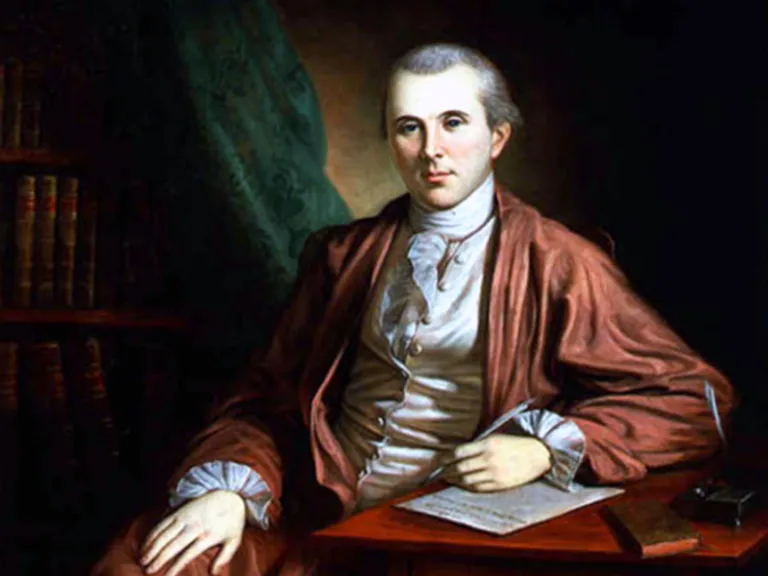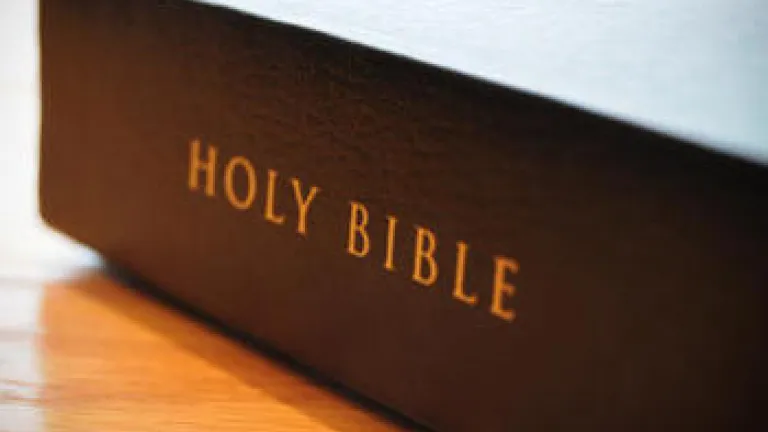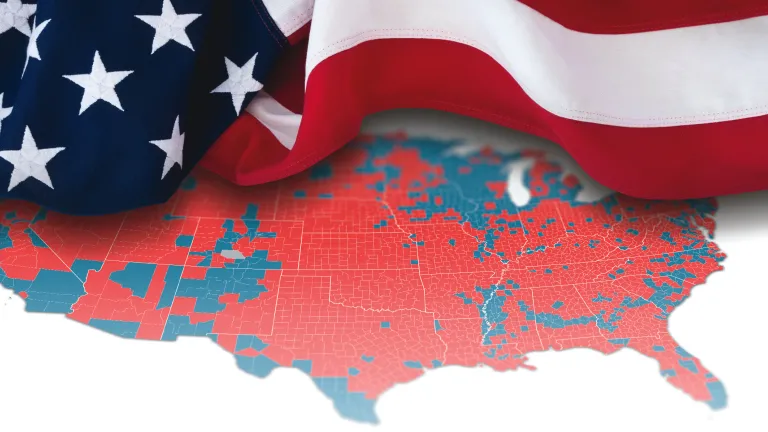
Course Content
It seems as if America is fixated on color schemes. The last four years have been defined with various color scenarios. The U.S. Department of Homeland Security came out with an array of colors to remind us of how secure or insecure we were on any given day. Orange alerts became a seemingly monthly event. For now, that has receded in the recesses of our mind.
It seems as if America is fixated on color schemes. The last four years have been defined with various color scenarios. The U.S. Department of Homeland Security came out with an array of colors to remind us of how secure or insecure we were on any given day. Orange alerts became a seemingly monthly event. For now, that has receded in the recesses of our mind.
On the flip side of the coin, the "red" states and "blue" states descriptions seem fairly locked into our everyday jargon as we live through what has come to be called the Culture War. This socio-moralistic battle pits what some consider traditional American values against the more progressive-liberal stream of the national psyche. Its battlefields range from schools to street corners to the airwaves and right into the courthouses of this land.
What colors my heart?
It's been said that modern America is divided almost right down the middle. Not by the Mississippi River, but by a very close statistical divide that shows a clear line of demarcation regarding the rights, freedoms and perceptions of liberty affecting America's future. Yes, all are Americans. Yes, all love their country, but both sides—both colors, if you will—see a different path in front of them.
But red states (conservative) and blue states (liberal) are somewhat misleading terms. Because whole regions within any colored state can be just the reverse color. Here in Riverside County, California, about 70 miles east of Los Angeles, I live in a red area of a red county in a blue state in a nation that has a red president in a world that, if you believe the preelection poll samples, was hoping that America would elect a blue president (which makes it a blue world, right?). Are you lost yet?
Judged on our own merits
So the big question comes down to this: What colors my heart? You may have noticed that I didn't say "What color is my heart?" but "What colors my heart?" Because when it's all said and done, you and I must be judged on our own merits, not by some pop phrase used to simplify a complicated social fabric.
Why? Because life is more complex than that. "Pigeonholes" and "pigeonholing" may be for the birds, but it is not for people. And yet we all keep on doing it, don't we? It is so easy to attach a label to people and compartmentalize their complexities, and thus diminish their abilities to contribute to the whole.
Then why do we do this? Yes, all of us—in politics, schools, churches and families—continue to spread this virus of separation as we press people into cages of our own satisfying design. And we do so because it's far easier to color code individuals than to sit down and talk to them.
Thus, enemy formations develop. You know, "them versus us." Except we like "us" better, because, well, uh, we are "us." What's really interesting in this ageless scheme of dissolution is how and when some of "them" used to be "us." It's a tragedy of division that goes all the way back to Cain and Abel.
Why is it that so often we are totally satisfied with getting out of the storms of life and getting under the dry safety of an umbrella, until we take a closer look and see who is holding the umbrella? That's when the fireworks begin.
The counterculture of God
I hope and pray that what colors my heart is what emerges from the words of Jesus Christ in Matthew 5, 6 and 7. This section of Scripture is often called the Sermon on the Mount. This plank or platform (to use political terms) of Christ's manifesto never speaks to parties, groups or collective bodies. It does speak to the individual. Furthermore, it is a noteworthy observation that Christ never used colors, but He did draw a stunningly accurate portrayal of how His followers would live.
Make no mistake. It is a declaration of contrasts and distinctions. It is here that He introduces the counterculture of God. It is not the way things are done here on earth, but it is how God exists and how He asks us to live. Jesus clearly said in Matthew 6:8, "Therefore do not be like them..." Like who? Like the society around, be they red, blue, pagan or what currently passes for religious folk steeped in their pigeonholing ways, thinking they do their God a service.
Christ, in His own way, took on both the "reds and blues" of His day. He took on the religious folk of His day and called them hypocrites (Matthew 6:5; Matthew 7:5), and at the same time rejected the futile worries of the secular world of the gentiles as laid out in Matthew 6:31-32. No, Christ refused to get into the world of color schemes. He was not a broad-brush guy. He offered people worth and dignity recognizing their incredible ability to contribute.
The power of salt and light
He further etched lines of delineation when drawing upon the age-old Latin adage, nil utilius sol et sal, which means, "there is nothing more useful than sun and salt." Jesus didn't label His followers as red or blue. But He did say they had better be like sun and salt. Salt is pure. It is a preservative. Its antiseptic nature destroys and doesn't put up with harmful agents. There is no compromise within its healing properties. It also adds flavor. You really know when this distinct agent with its spicy edge is missing.
Likewise, light is the direct opposite of darkness. One little candle on a windowsill deep in the countryside can cut a hole in the darkness for quite a distance. So, too, should be the example of those who profess to follow the Teacher on the mount. Yes, the absence or presence of sol et sal creates deep contrasts.
The joy of bringing people together
In Matthew 5:9 Christ said, "Blessed are the peacemakers, for they shall be called the sons of God." Another way of putting it is, "Happy are those who bring men together, for they are being like God."
Let me use an example from history to illustrate this. The U.S. presidential election of 1800 was the original "red versus blue" battle. In fact, it inaugurated a vicious exchange of words between parties that has not been matched to this day. John Adams and Thomas Jefferson, two notable heroes of the American Revolution, were pitted against one another. These same men had once been friends. Both were sincere. Both loved America, and yet mistrusted the other. They wanted the same thing, but saw it in different ways. Jefferson ultimately triumphed. Adams would concede and recede into frustrated solitude.
Some of you may be familiar with the ultimate reconciliation that came about between John Adams and Thomas Jefferson. But most of you will not be familiar with the name of Benjamin Rush and his part in it. Dr. Benjamin Rush had been one of the original signers of the Declaration of Independence. He was a friend of both men. It was his constant and persistent behind-the-scenes letters to both men that finally melted their animosity and allowed them to come to peaceful terms. It would take three years—1809, 1810 and 1811—but finally the animosity thawed.
Embrace, embrace each other
Rush's efforts finally took hold with his letter of Dec. 16, 1811, to John Adams. He would pen:
"And now, my dear friend, permit me again to suggest to you to receive the olive branch, which has thus been offered to you by the hand of the man who still loves you. Fellow laborers in erecting the great fabric of American independence!—fellow laborers of the gratitude and affection of posterity!—and fellow passengers in a stage that must shortly convey you both into the presence of a Judge with whom the forgiveness and love of enemies is the condition of acceptance!—embrace—embrace each other! Bedew your letters of reconciliation with tears of affection and joy. Bury in silence all the causes of your separation. Recollect that explanations may be proper between lovers but are never so between divided friends. Were I near you, I would put a pen into your hand and guide it while it composed the following short address to Mr. Jefferson—'Friend, and fellow laborer in the cause of liberty and independence of our common country, I salute you with the most cordial good wishes for health and happiness—John Adams'" (Bill Bennett, Our Sacred Honor, p. 206).
Adams would ultimately come to terms with his pride and would be the first to write. The first red and blue candidates would remain affectionate friends for the next 15 years until they both died on July 4, 1826, 50 years to the day from that momentous event that had first drawn them together. Oh how history might have taken a different turn if Aaron Burr and Alexander Hamilton, the two other great political rivals of 1800, had had such a man as Benjamin Rush for a friend. Was Benjamin Rush a peacemaker? I'll let you be the judge. Was he like a purifying speck of salt in a decaying relationship? Was he like a beacon of light in what appeared to be one deep dark cavern of the heart? One thing I do know, he didn't get stuck with colors, but allowed his heart to be colored with a powerful reality—that our differences should not overwhelm our commonalities.
Prophecy is more than the waving of a wand
The pages of World News and Prophecy direct your attention to a future time when people are going to set aside their differences. In that sense, society is going to become color-blind. People are going to throw out the reds and the blues and all those man-made labels, and are going to choose to follow the undiluted culture of God.
The meaningful prophecy of Isaiah 19:23-25 portrays a time when age-old enemies are going to come together in a world without divisiveness. Isaiah proclaims, "In that day there will be a highway from Egypt to Assyria, and the Assyrian will come into Egypt and the Egyptian into Assyria, and the Egyptian will serve with the Assyrians. In that day Israel will be one of three with Egypt and Assyria—a blessing in the midst of the land, whom the LORD of hosts shall bless, saying, 'Blessed is Egypt My people, and Assyria the work of My hands, and Israel My inheritance.'"
Will ancient historical animosities disappear with simply the waving of a wand? Will the anger of nations simply melt into nothingness by some form of divine beatific light? Or will Jesus Christ use men and women of goodwill who patiently and persistently strive to bring people together no matter the odds?
I would like to think there are more Benjamin Rushes in the making, for they are needed now more than ever. Men and women who are happy bringing people together because doing so is godly. In a world of divisions, it is the writings of Benjamin Rush that echo the sentiment found in Isaiah 30:21, "This is the way, walk in it." For there is no better way to bring the reds and blues of the world together than to offer them the encouragement of "embrace—embrace each other! Bedew your letters of reconciliation with tears of affection and joy. Bury in silence all the causes of your separation." Such thoughts are not red or blue, but merely what colors a truly godly heart.





